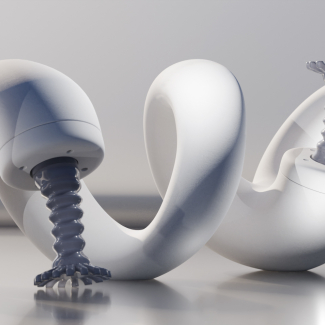
Less human-like robots are more readily accepted
From connected speakers to domestic robots, new social machines are slowly entering our homes and winning over more and more individuals and businesses. Though we are learning to live alongside robots, human–robot interactions can sometimes be rocky. According to a team of scientists1 led by a CNRS researcher, the key to our acceptance of robots may lie in our perception of dominance. The team’s findings, published in PLOS ONE (17 November), reveal that we compare ourselves to robots when they perform functions similar to ours, such as walking, talking, or jumping. If this comparison shows that we perform better, it gives rise to a hierarchy that can then manifest itself as dominant behaviour. This perception of superiority can hindersocial acceptance of robots. However, when their functions surpass human capabilities, like hovering or floating, our perspective changes. With no basis for comparison, no dominance hierarchy is established. This lack of comparison promotes their acceptance. It is not so much that they perform more ‘important’ tasks, but rather that they cannot be evaluated using the same criteria. This research suggests that, if we are to live more peacefully with robots, they should be designed with attributes, appearances, and functions that are distinct from our own, thus preventing attitudes of dominance and poor acceptance.

©Tatjana Nazir/CNRS/Université de Lille

© Robin Gigandet/SCALab
- 1From SCALab (CNRS / Lille University) and the Fédération de Recherche Sciences et Cultures du Visuel (CNRS / Lille University / Centrale Lille Institut).
Improving the acceptability of social robots: make them look different from humans. Tatjana A. Nazir, Benjamin Lebrun and Bing Li. PLOS ONE, 17 November 2023.

